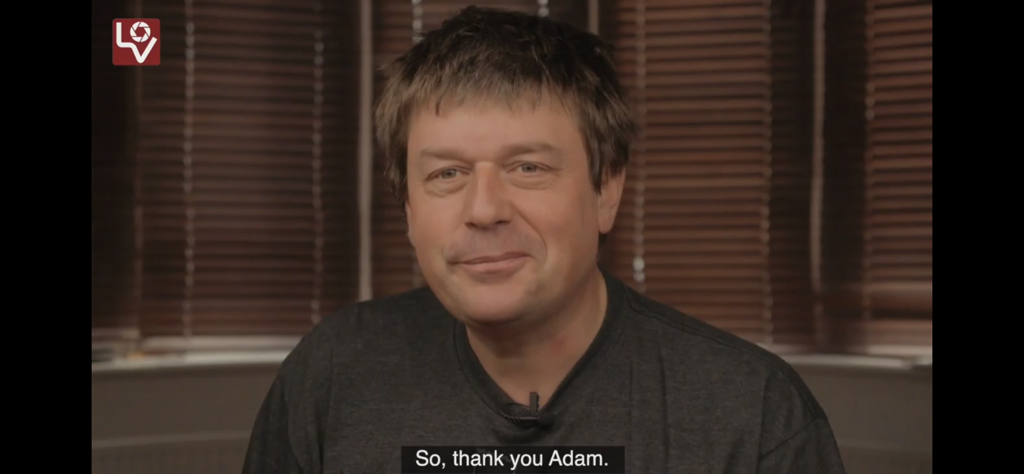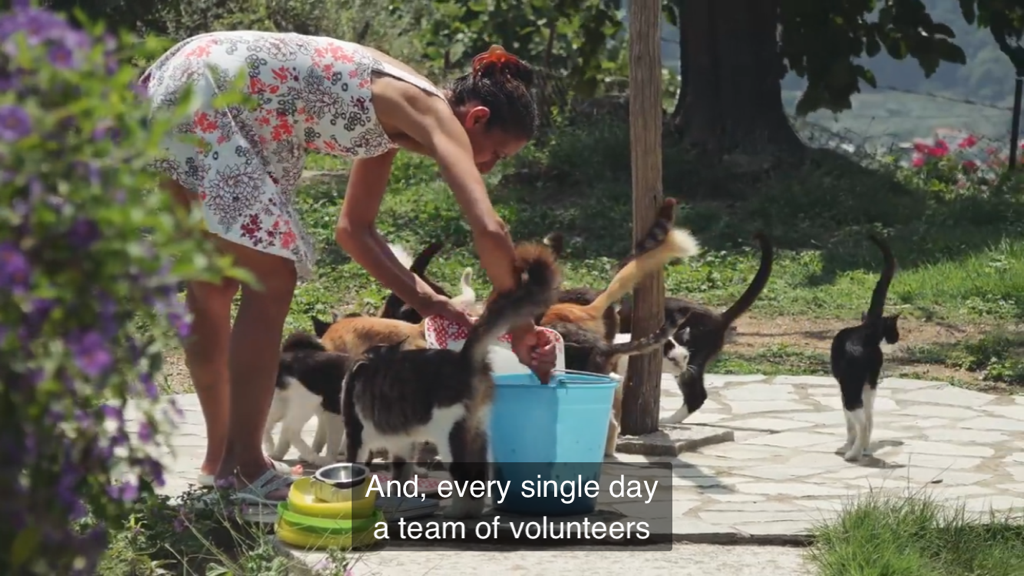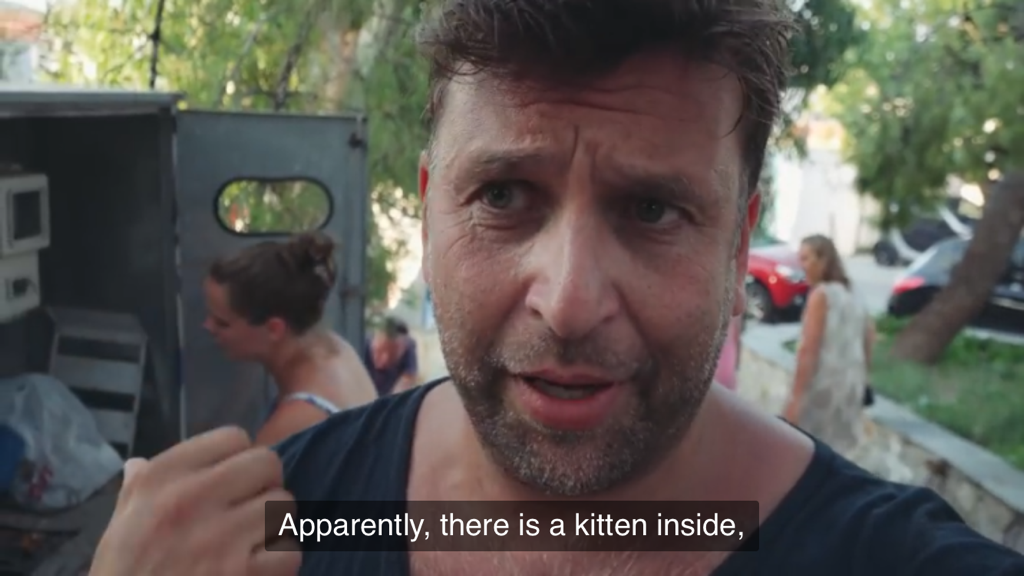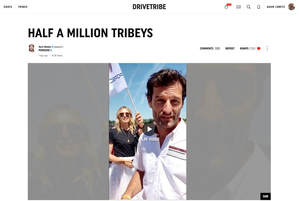|
Eerie blog post title aside, Australian filmmaking company Blackmagic have been turning things upside down recently with some new production gear and I felt it was time to bring that magic to Loretz Visuals offering.
A huge aspect of filmmaking is procuring the highest quality images possible and with the launch of the Blackmagic Pocket cinema camera 4K, it seemed like this could be the solution for high end work. To be clear, I’m talking about short films, commercials, single interviews or music video. In this content, stylised imagery and dynamic range is critical and where raw video is required. Raw what? Yes, like in photography, video can now be shot on some cameras in raw formats. The benefits being, that with visually lossless compression and the ability to stylise or amend the footage in the editing process, this new Blackmagic equipment offers Loretz Visuals more creative freedom. The colour science of Blackmagic cameras is World class, skin tones look simply beautiful. Before offering new technology, I always test equipment thoroughly first. Passion projects are the best test bed for this, where I can experiment and master my craft. Straight off the bat I filmed a piece to camera. A testimonial from a client. Secondly, I filmed an AirBnB for a friend. This time shooting interiors with the camera on a gimbal, to float around and add a graceful dynamic. There’s a best camera for every film. For longer form content, wet weather, 360 video or just remaining low key, the arsenal at my disposal now covers every event. With an open mind, 2019 is my 20th year in video production; always learning, understanding my clients needs and connecting them with the right visual solution.
1 Comment
The World of filmmaking is constantly evolving. Back in 2007, YouTube was growing rapidly, however indie filmmaker Tom Swindell, whilst popular on the platform, had designs on making it at the BBC. With shrewd moves, style and attitude, Tom made his own luck.
I recently had a chance to work with Tom on a Channel 5 documentary and took the opportunity to interview him about his career so far. Interview below. Alongside Loretz Visuals, I produce content for my YouTube channel The Filmmakers Workshop. The aim of the channel is to offer fresh insight in to Filmmaking today. Since 2013 I have interviewed first time feature film directors, animators, BBC and Hollywood directors of photography as well taking time to create news, reviews and offer insight of my own for the filmmaking community. If you want to learn to be a filmmaker then subscribe to the channel to find out about some new filmmaking workshops set for Autumn 2019. #GH5 #filmmaker #documentary Time is money, but more than that for me, a filmmaker with a wife and three lovely children- time is precious. As such, personal projects and freebies are something that are often hard to entertain. Sometimes though, a project grabs you and you find yourself compelled to pull out the stops. Last week, I heard that my friend and fellow filmmaker Philip Bloom was releasing a documentary to aid a charity dedicated to helping cats in Skiathos. Well, if you know Philip, you’ll know that cats are a massive part of his life and that he has spent a lot of time and effort shining a light on their welfare and this good cause. Feeling I might be able to help somewhat, I reached out to Philip and offered to subtitle the first part of his charity fundraising documentary. To make the film more accessible I thought it would benefit from English subtitles. In an article, https://www.3playmedia.com/2015/04/03/3-reasons-why-closed-captions-increase-youtube-views/ Videos with subtitles saw a 13.48% increase in views over their first 14 days and 7.32% more views over their lifetime. Subtitles also improve SEO and open up the possibility to watch the film in places where you need the sound off, such as on public transport or library. Having an English subtitled version can also be used to help create other language versions too. As English is both a common language for translators and with the timestamps in place, it’s easy to simply replace the text and upload the .srt subtitle file to YouTube or Vimeo. The first instalment of the documentary was emotional, beautifully shot, with a great voice over by Philip. I hope the subtitles help raise awareness and increase the call to action- The Skiathos Cat Welfare Association needs donations to buy land to build a cat sanctuary. Philips documentary is being released in several parts. Part one is here https://youtu.be/WVzv74KQGV0 Please watch and consider donating.
Vlogging has become a big deal of late.
Casey Neistat, PewdiePie and others have made the (TV) news and becoming household names. Acceptance of internet stars is now tangible by the established media. Moreover, the term 'broadcast' is now one which most certainly includes internet services and sites like Amazon, Netflix and YouTube seem to dominate social media and our viewing schedules. As a kind of extension of reality TV, Vlogging takes the audience on largely a first person journey in to quite often a myriad of previously niche activities, compared to those featured on broadcast TV. Video gaming, make up tutorials and filmmaking tips might never have gotten a look in on broadcast TV. I digress, oh so slightly, because the real focus of this blog is to examine the technical side of Vlogging. It is important to set the scene though, as the concept of broadcasting changes through its production and distribution means yet at the same time, a large chunk of this new programming is often being made by individuals not crews hired by corporations Unlike TV broadcast, where the Kardashians are being filmed by a crew, Vloggers by their nature are typically, one man bands. Peter Mckinnon seems to utilise a cameraman, opening himself up to be more of a 'typical tv' presenter from time to time. So to the question on my mind, and no doubt many filmmakers and of course Vloggers, to date it seems no camera manufacturer has really given Vloggers the time of day and created a unit for this purpose. What would the perfect Vlogging camera be like? As a point of reference, let’s start with the Sony A6500 - a well spec’ed capable camera (as used by Casey Neistat); 4k video. Largish sensor, good in low light and very good autofocus/face detection. However, the Sony A6500 suffers from terrible rolling shutter, whereby panning left-to-right creates a jelly like effect on the image. The battery life is pretty poor, the screen is not flip around so you cannot frame yourself and the camera uses separate lenses. On the audio front, the A6500 whilst it can take a standard 3.5 mm mic, or Sonys XLR unit, doesn't have a head phone jack for monitoring. In my mind, the perfect Vlogging camera has a fixed wide lens of around 15mm and a large-ish sensor such as micro four thirds or APSC with the ability to crop in on the sensor to act as a zoom. The camera should use Sony NPF batteries which could give very long record times and power peripheral devices. A 1080P flip screen of 7 inches would provide The detail to ensure perfect composition and focus. At either side of the FlipOut screen should be LED lights to perfectly expose the image and allow Vloggers to film day or night. Focus should be able to be set on the flip out screen, at exactly arm's-length or a distance predetermined so that the camera does not hunt to find your face. Audio is massively important, and the perfect Vlogging camera should have four assignable audio channels, stereo left, right, dual mono Centred and rear. Built in to the unit should be Bluetooth audio, to capture sound from a capsule mic/lavalier when the vlogger is more than arms length from the unit. Wireless Bluetooth earbuds should also be able to be in the audio back to the presenter for monitoring. As far as ergonomics go, the unit needs a handle, to be held at arms length, a tripod mount area that does not interfere with the battery door and flexible legs al a Joby to attach the unit when travelling without a tripod. Finally, the camera should have image stabilisation built in. Interestingly, several manufacturers have tried to integrate good sound capture with 1080P video, such as the Canon Legria and Zoom with their Q8. However, these models both seem favour audio quality over video and seem like they don’t meet the total needs of a modern Vlogger, who should be able to shoot 4k video and time lapses, a large is sensor, have integrated lights and excellent battery life. Vlogging is here to stay, so let’s just see what the main camera manufacturers come up with to fill this gap in the market.
This is a post I felt was worth republishing - originally posted in November 2015.
As a filmmaker, and more often than not a single shooter, I have to be proactive and have a ‘hands on’ approach. The answer almost always has to be Yes, even if that means jumping new hurdles. So, when asked by Philip Bloom to be a group mentor on a film masterclass the answer was simple. Whilst I hadn't mentored filmmakers before, I have staged a successful workshop before and am no spring chicken to making films and rapping with other filmmakers. The question for me then was really, could I remain 'hands off'. I'd do my best. The masterclass was a 3 day event at Wotton Manor hotel during October 2015-sold out with 22 attendees. To my amazement this was truly an international affair with about 2/3 of the filmmakers from outside the UK. The first goal of the event was to get to know the attendees and then challenge the attendees and assess their strengths and weaknesses. Secondly, the senior tutors Philip Bloom and Nino Leitner, along with mentors Johnnie Behiri, Julian Wakefield and I had to co ordinate our assessments to create 4 mentored groups who would go on to create a film each over the next 2 and a half days (2 different edits per film). During this getting to know you process, both mentors and attendees took time to discuss their work and let everyone know what kit they used and had brought. Before I get into the kit- what about them? So, just who goes on filmmaking masterclasses? Interestingly, 90% of attendees were already shooting professionally, from corporates to events, big budget weddings, news and television. A couple of guys just wanted to suss out and utilise better the video function on their DSLRs. And, then there was Tim who it seems owns a multitude of cameras and appears to be living the dream ; ) - Happy Days. All said and done, these guys had some super skills already, but could they work in newly formed teams and not just be technically good, but most importantly nail a story? First off, they'd be challenged to shoot a sequence in camera. Here’s a couple of videos I shot on the fly whilst overseeing the proceedings. But first, let's get back to the kit. So, besides the attendees kit we were also lucky to have alot of cameras and lights loaned to the masterclass from one of the sponsors CVP. FS7s, C300mk2, Panasonic vx200, FS5 (although that was for show only) The other masterclass sponsor was Rodemics, so a big thank you to them both for their support. What I found very interesting was the abundance of Sony kit everyone had brought, a couple brought FS7s and over half a dozen A7s' A7s2s A7r2s. As far as editing apps go the attendees were almost evenly split between Premiere and FCPX, with a couple of chaps using something called AVID and Edius. (I'm joking of course!- they're just tools) All in all, this was all very enlightening and gave me a sense of who Ii'd be sending the next three days with. THE CHALLENGE During this sequence I manned a post by which each randomly picked teams would shoot a sequence in camera. My post, the coffee machine. See videos, here, and here. It was such an eye opener watching egos and skillset at work, all in a good way. A filmmaker without an ego, may as well about turn and pick up there pink slip. In this 10 minute challenge the key would be delegation and focus- those that debated after shooting began ran in to trouble, with miscommunication and ran out of time. With the challenge complete, we views the results and it certainly sharpened the attendees resolve to get a singular focus. It also gave the teaching Staff a chance to compare notes on the attendees and split them up in to groups. Surprisingly, we all had very similar views and the groups were formed. My international group had 6 members; Teymur (Germany), Carl (U.S.A), Michael (Scotland), Avi(India), Lior (Israel) and Christian (U.S.A). Our actor was Teresa and our subject Work. PRE PRODUCTION Planning the shoot like any other, we had to assess the variables; the crew, the kit, the location and the timeframe. But first though, we'd need our story. Straight off the bat, there was discussion about using the hotel interior. Did our character work there? If so, what was the conflict and how would it relate to work. Maybe she has a headache and she sneaks outside to the beautiful gardens to take a pain relief pill? Is this going to be an advert? Whilst this had something in it, I asked the group to think laterally and consider other types of work and remember the potential constraints of space and time in lighting indoor scenes. Whilst the weather was pretty ugly out, it was due to brighten up and that big glowing ball in the sky does make things look pretty with no set up time. Next was ventured the prospect of our character being a writer presenting a blog about the writing of her new book, the group considered some comic possibilities with a second character off camera, filming her and building the film around this relationship. Rather than pursue this, the group took the idea in another direction. What if the writer had been through an emotional experience, as a hostage and returning to the large house was creating some inner conflict. As a single person, in an otherwise expansive environment (Wotton Manor Gardens) with a stand offish approach we could make her appear alienated, vulnerable and drive the conflict further through a reflective monologue. Further to this we considered how the themes of flight, journey, nature, life, death, decay, familiarity, childhood and awakening could be displayed visually through composition, camera moves and specialised kit such as the Helix Junior stabilised rig and Christians DJI drone. At this point we had already decided that we would shoot principally on Carl's Sony FS7 and his CP2 primes and Liors Canon 1DC - both shooting standard profiles. Whilst I had advised we shoot UHD at 25P, as the shoot was outdoors, the group decided upon seeing the cameras to full 4K at 23.98fps. To me, these ideas had the greatest potential under the shooting conditions and as the working day drew to a close the group moved in to the Hotel bar to draw out the ideas literally in to a storyboard. A couple of Guinness’s later we had storyboarded for our two edits codenamed Linear and Zigzag (to account for the principal characters direction, literally and state of mind). It may have taken 15 hours to complete our veritable tick list of shots, but at least we were ready for action.(See storyboard images at bottom of post) PRODUCTION Shoot morning, it felt like we were up against it, the rain still hadn't stopped -we knew we had a lot to achieve. I was acutely aware of time - glad we had stayed up to prepare properly. Whilst my group prepared their kit, I went on the hunt for some umbrellas to keep the talent and kit dry. Lucky for us, Philip had several umbrellas in the back of his 4x4- not a single umbrella available from the hotel - I thought all Hotels were resplendent with their own umbrellas, or did I dream it? Sometimes, it's the little things that really help on a shoot like staying dry and well fed. With my team all on the same page it was time to brief our actor Teresa. As it transpires she had worked for the UN and had a good understanding of the kind of character she was to portray and in five minutes she was ready. From the get go, the team established which role they would be taking, with everyone cycling through roles throughout the day- kicking off with Teymur directing. At this point, I felt completely at ease as everyone in my group confidently rose to their particular position/challenge. My job, just hanging back, but keeping a watchful eye on the action and the time. Whilst Carl operated the FS7 with Christian to assist and pull focus, Lior found suitable positions to capture alternate angles and B roll with his Canon 1DC. Avi got stuck in by covering the action with a zoom H6 to capture some natural sound. Lastly, Michael got set up to follow Teresa using and A7S on the Helix Junior stabilised gimbal. Somewhere between the opening shot and the third shot something quite unfamiliar but particularly beautiful happened. The rain stopped and the sun came out. This was not in the storyboard (what rightful filmmaker would dare predict the weather) but hey serendipity sometimes shines on the brave! Philip moved between the groups throughout the production day to offer advice and keep all the groups on track. When he visited our group it was great to have his input to both motivate and have fun with us. Smoking a trademark cigar, I did find it particularly funny as Philip jumped behind a bush to hide with the guys whilst Christian took his drone up for a Gods eye shot- a proper A Team moment- I love it when a plan comes together! The majority of the other groups shot predominantly indoors, however late in the day another group did need our principal location. Luckily, this came as a blessing as we had spent too much time there and were possibly overshooting the scene. Furthermore, it was fast approaching 4 PM and we only had about 40 minutes of daylight left, Time to move on to our final location – the walled garden. At this point we had no script, just a story idea. Resting on a dilapidated wall I wrote a stream of consciousness wholly consumed in our characters world. As group mentor, I probably shouldn't have done this, I should have delegated the task to one of my group. My apologies chaps. The truth is, I felt a strong emotional connection to the story the group had detailed. In 90 seconds it was written. No sooner was it written, I read it aloud to Lior and Michael-got halfway through and felt myself choking up. Lior looked slightly bewildered at my emotional countenance and asked me if I was ‘for real’. I drew a deep breath and told him if the script doesn't move me, how is it going to move an audience! I'm not afraid to get deep. As a filmmaker you need to be inside other peoples heads – the audience and your characters. (See image of monologue at bottom of post) When it came to the key shot of Teresa crying I have to say I was really impressed. This had been a turning point shot as I saw it in my head and our first close-up of Teresa. Surrounded by half a dozen guys she only just met, with Lior’s Canon 1DC about a foot from her nose, she engaged with her character and brought a true emotional moment to the film. Aside from providing a touching moment, Teresa was great company too – keeping the spirits up, enjoying the shoot and even giving us a song or two between takes (her voice is on the end credits) For me, the fact that the talent and crew communicated well meant that we all enjoyed the creative process more and got to fully realise the film. Teresa even wrote her final dialogue from the groups direction (See image) At sundown we had to wrap filming and it gave us just one final hour for Teresa to perform her monologue before her departure at 5:30 PM. Recording dialogue in a hotel can have benefits; we popped the quilt off of Carls bed and hung our coats in the wardrobe, laying the quilt over the doors with Teresa sat in limbo between Carl's room and Narnia – ready to nail it. Then the hurdle. Adjacent to Carl's room was a group of bubbling and screeching sweet 16 yr olds who were preparing for a huge Halloween party. There's always something. Another skill all filmmakers should have is one to placate others and organise suitable conditions for recording. Five takes in the bag and we were done, time for all us kids to go and celebrate. Well almost all, on our way to the bar Carl and Christian took the media cards to offload the rushes and began tagging takes in FCP X. In a bitter blow, Michael’s gimbal footage was lost due to a format error in the A7S (never switch between PAL and NTSC with a card in that you have recorded on as the camera wipes the card) as it transpires, not even the most robust recovery software can retrieve these files.Yikes! EDITING As Carl, Christian, Teymur and myself all have experience with FCP X we chose this application for our edits. Carl and Christians MacBook Pros could easily natively edit the FS7 and 1DC 4K footage and as we had a tick list, the edit came together pretty swiftly. Christian edited the first film called ‘Linear', where Teresa walks from the building to a safe place. Teymur (who also shot images of Teresa and created the photo book cover) edited the second version called zigzag which we show the reflective side to Teresa's character. The FS7 and 1DC images looked great straight out of the cameras and matched very well. In FCP X, I showed the guys a few tips on how to, or how I colour correct- to balance our cameras and tweak minor overexposure. The last hurdle was music, and whilst Philip had kindly provided some songs through Musicbed, Christian had rights to a copyright free tune which worked really well. As far as building an engaging narrative, the layers of dialogue, video and GFX all sit on the music, so it really cannot be understated how useful it is to know where to get good quality music from and your rights on its usage. During the edit Michael grabbed a final shot of a statue to add to the film, a shot which is used in my master edit. Re-shoots are often necessary and sometimes part of the learning experience. Not an issue for us as we were still on location and the rest of the team were engaged in the edit process. During the edit process, half of the teams were whisked away by Philip to provide a mini lighting workshop, giving them a chance to see him at work and ask questions. REVIEW The review section took place on the final day, day three – in the afternoon. This gave the teams and tutors the opportunity to showcase all of the hard work from the past 2 1/2 days and provide feedback. Watching the other groups films; the characters, stories and technical ability of the attendees brought a huge smile to my face and provided some laugh out loud moments – I found Nino and Johnnies groups films particularly funny. The real ‘take home’ of course was to be in such rich, professional company, attendees and tutors alike and hear everybody fresh opinions and deconstruction so acutely focused on the four group films. The session certainly provided much food for thought. With discussion about aerial video, when to use camera movement, planning your sequences (better pre production) and the briefing of actors to achieve the best performances - setting the tone. All said and done, to me, the discussion all pointed back towards refining the stories, the better the crew and talent understood the story, its tone and pace, the better the final films. Personally, as soon as I had watched my groups two films I could see how they could become one and decided I'd cut something based on Teymur and Christians edits. On a final note, I’d like to thank Philip Bloom for the call to be a part of the Film Masterclass and all the other tutors and attendees, especially my group though, who I am very proud to have mentored - my edit of their two films is below (4K if you want to go large, and English subtitles too). As individual filmmakers, who often work alone, we all hone our technical abilities and create storyboards and short films. However, it is only when we work together as crews can we truly experience filmmaking at its most exciting; creating and sharing a singular vision, learning to trust, to delegate, to persevere under tough conditions and most important of all to be brave enough to get emotionally connected to and fully realise our stories. More about Adam Loretz at www.loretzvisuals.co.uk |
AuthorAdam Loretz. Archives
February 2024
Categories |





 RSS Feed
RSS Feed
